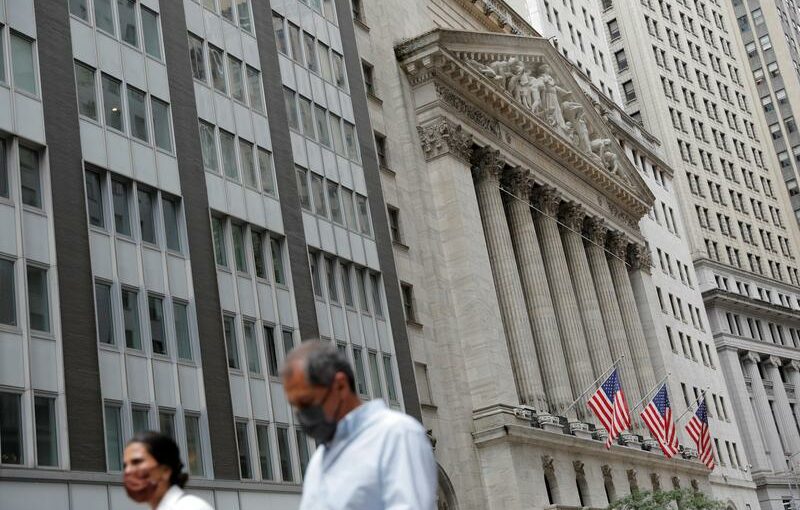(Reuters) – Wall Street’s main indexes tumbled on Monday, as concerns about the pace of a global recovery spurred a selloff across sectors at the start of a week in which the Federal Reserve will decide on potentially tapering its pandemic-era stimulus.
Ten of the 11 major S&P sectors declined. Economy-sensitive industrials, financials and energy dropped between 1.7% and 3.6%.
The banking sub-index shed 3.9%, tracking U.S. Treasury yields as worries about the default of Chinese property developer Evergrande appeared to affect the broader market, with commodities slipping and investors flocking to the perceived safety of bonds. [US/].
Technology-related stocks Microsoft Corp, Google-owner Alphabet Inc, Amazon.com Inc, Apple Inc, Facebook Inc and Tesla Inc were down between 2.2% and 4.1%, weighing the most on the benchmark S&P 500 and the Nasdaq.
Wall Street’s main indexes have been hurt this month by fears of potentially higher corporate tax rates denting earnings and have shrugged off signs inflation might have peaked.
The S&P 500 is down 4.1% from its intra-day record high hit on Sept. 2 and is on track to snap a seven-month winning streak.
“The Evergrande situation, although big and impactful, isn’t the reason for this selloff,” said Jamie Cox, managing partner for Harris Financial Group in Richmond, Virginia.
“Rather, stalemates in Congress on the debt ceiling, worries on policy changes or mistakes in monetary policy, and a litany of proposed tax increases have dampened the mood for investors. When this occurs, corrections happen.”
All eyes on Wednesday will be on the Fed’s policy meeting, where the central bank is expected to lay the groundwork for a tapering, although the consensus is for an actual announcement to be delayed until the November or December meetings.[nL1N2QI1L8]
At 12:06 a.m. ET, the Dow Jones Industrial Average was down 663.66 points, or 1.92%, at 33,921.22, the S&P 500 was down 90.65 points, or 2.04%, at 4,342.34, and the Nasdaq Composite was down 380.55 points, or 2.53%, at 14,663.42, and was set for its worst day since May 12.
Strategists at Morgan Stanley said they expected a 10% correction in the S&P 500 as the Fed starts to unwind its monetary support, adding that signs of stalling economic growth could deepen it to 20%.
The CBOE volatility index, known as Wall Street’s fear gauge, hit its highest level in over four months.
Carriers United Airlines, Delta Airlines and American Airlines gained between 0.6% and 1.8%, as the United States relaxed travel restrictions on air passengers from China, India, Britain and many other European countries who have received COVID-19 vaccines in early November.
Declining issues outnumbered advancers for a 7.40-to-1 ratio on the NYSE and for a 5.71-to-1 ratio on the Nasdaq.
The S&P index recorded no new 52-week highs and 3 new lows, while the Nasdaq recorded 13 new highs and 147 new lows.
(This story refiles to remove extraneous text in headline)
Source: Read Full Article
